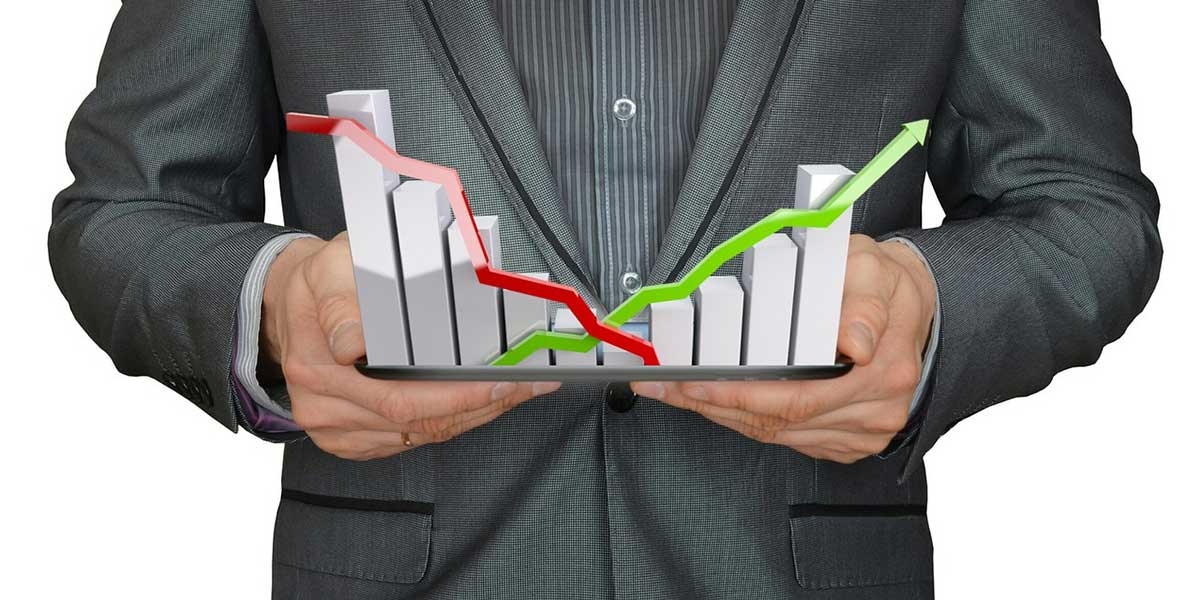Once again, instinctive investors sold and lost, while analytical investors bought the dip.
This article, written by Dr. Dan Gellar, is published in it's entirety with his permission.
Once again, instinctive investors sold and lost, while analytical investors bought the dip.
SAN FRANCISCO, October 8, 2021 – Twice in the last 30 days the DJIA dropped and gained back nearly 1,000 points. These large swings in equity prices are caused by panic selling of instinctive investors, while the analytical and professional investors are taking advantage of the dip and buy. The DJIA dropped to 33,834 on Monday October 4, only to come back up to 34,842 on Thursday October 7. Last month, on Monday September 20, the DJIA dropped to 33,970, a decline of nearly 1,000 points and gain it all back on September 20.
Individual investors are the largest-growing segment of the equity market. The individual-investor market conducts about 25% of the overall market trades in 2021; up from about 15% in 2019 according to Investopedia. Since most individual investors do not use a scientific approach to investing, such as the Scientifically Predictable Investing Model, they panic when they hear negative news and instinctively sell their stock, often at a loss. Moreover, since individual investors follow each other, instinctive selling can produce a 1,000 point drop in the DJIA.
Decision science, which is the study of financial-decision making, features two modes of financial response. The instinctive response, a.k.a. System 1, and the analytical response, a.k.a System 2. Scientific research shows that money anxiety is the alternator between the instinctive and analytical decision modes. Thus, when the level of money anxiety increases, investors tend to make instinctive investment decisions that are likely to be flawed and result in a loss. Hence, all those investors who panicked and sold their equity positions at the dip.
The Scientifically Predictable Investing Model was designed to neutralize instinctive decisions by promoting the science of financial decisions. The model provides investors with a scientific projection of the featured equities, suggesting that investors follow the scientific projection rather than their instinctive response to sell when panicking. The Scientifically Predictable Investment Model provides peace of mind during volatile markets such as the one experienced in the last two weeks.
“The reason individual investors follow each other, even if it means a loss, is because it is hard to made such difficult investment decisions on their own” said Dr. Dan Geller President of Analyticom, and developer of the Scientifically Predictable Investment Model. “What individual investors need to know is that they are not investing alone when science is on their side.”
The Money Anxiety Index functions as a reliable predictor in the Scientifically Predictable Investing Model. The model projects increase in equities based on fluctuations in the level of money anxiety. The Top Five ETF is a monthly projection of price and return with the highest level of statistical confidence. The projection features the price increase of each of the five ETF for the coming 30 days, as well as the projected rate of return.
The monthly projection contains all the statistical analysis pertaining to each of the featured ETF, thus no additional research and analysis are needed. Additionally, repositioning of the ETF is done only once a month, and in some cases, when the price and return trend continues, no repositioning needs to take place. The average repositioning is about 30 minutes each month. Scientifically Predictable is available for monthly subscription. A video featuring the scientific framework of the model is provided on the home page.
About Analyticom LLC
Analyticom LLC is a behavioral economics firm specializing in predictive models of financial behavior. The company is a pioneer in the development and application of the Money Anxiety Theory, which impacts consumer consumption, making up about 70 percent of the U.S. economy, and the equity market, where American households own $29 trillion worth of equities—more than 58 percent of the U.S. equity market.

